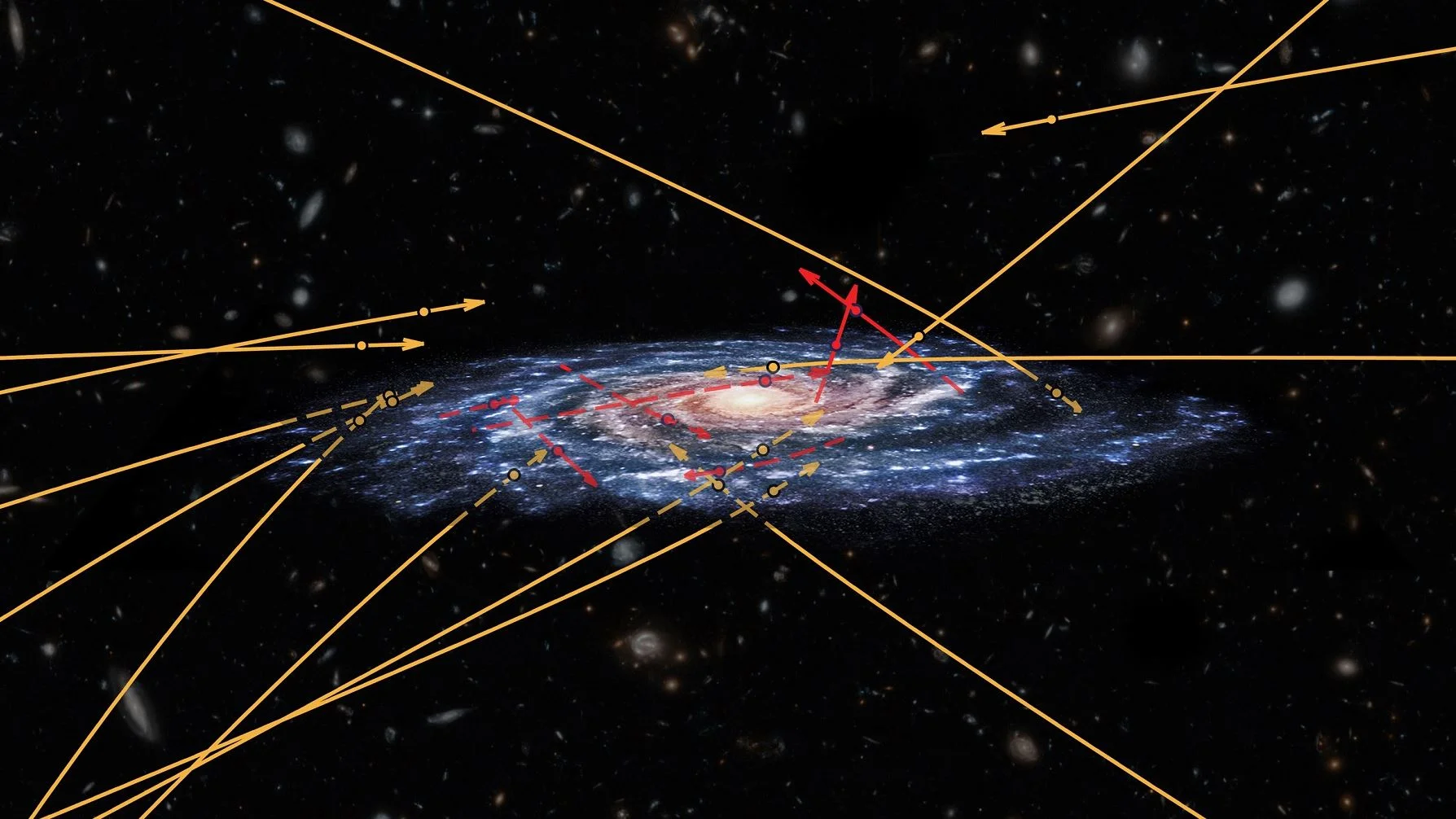Any comments, suggestions or just looking for a chat about this subject? Don't hesitate and leave a comment on our improved comment section down below the article!
By Matt Williams
In December of 2013, the European Space Agency (ESA) launched the Gaia mission. Since that time, this space observatory has been busy observing over 1 billion astronomical objects in our galaxy and beyond – including stars, planets, comets, asteroids, quasars, etc. – all for the sake of creating the largest and most precise 3D space catalog ever made.
The ESA has also issued two data releases since then, both of which have led to some groundbreaking discoveries. The latest comes from the Leiden Observatory, where a team of astronomers used Gaia data to track what they thought were high-velocity stars being kicked out of the Milky Way, but which actually appeared to be moving into our galaxy.
The study which described their findings was recently published in the Monthly Notices of the Royal Astronomical Society – titled “Gaia DR2 in 6D: Searching for the fastest stars in the Galaxy“. The study was led by Tommaso Marchetti, a PhD candidate from the Leiden Observatory, and included Elena Rossi (an associate professor at Leiden) and Anthony Brown – the chair of the Gaia Data Processing and Analysis Consortium (DPAC) Executive.
The positions and reconstructed orbits of 20 high-velocity stars, represented on top of an artistic view of our Galaxy, the Milky Way. - Image Credit: ESA/Marchetti et al. 2018/NASA/Hubble
For the sake of their study, the team consulted data from Gaia’s second data release (DR2) – which occurred on April 25th, 2018, and is based on observations made between July 25th, 2014, and May 23rd, 2016. Contained within this data were the positions, parallaxes and proper motions for about 1.3 billion stars, which includes those that are traveling around our galaxy at hundreds of kilometers per second.
Astronomers are interested in these stars because their motions can provide clues about the past history of the Galaxy. The fastest class of these stars are hypervelocity stars (HVS), which travel at speeds of up to 700 km/s (435 mi/s) at distance of between 100 and 50,000 light-years from the galactic center. These stars are believed to have originated in the core of our galaxy before being ejected, thanks to interactions with the Supermassive Black Hole (SMBH) at its center.
So far, only about 20 hypervelocity stars have been discovered in our galaxy, but Gaia’s recently published second data release provides a unique opportunity to look for more of them. As study co-author Elena Maria Rossi explained in a recent Royal Astronomical Society press release:
“Of the seven million Gaia stars with full 3D velocity measurements, we found twenty that could be travelling fast enough to eventually escape from the Milky Way.”
Artist’s impression of hyper-velocity stars speeding through the Milky Way Galaxy. - Image Credit: ESA
Contrary to what they were expecting though, the team found that most of the HVSs they spotted were racing towards the center of the Milky Way and not away from it. So rather than being stars that were kicked out of our galaxy, it is entirely possible that they are intergalactic interlopers that came from the Large Magellanic Cloud or from an even more distant galaxy. If true, then these stars will carry the imprint of their site of origin.
In much the same way that studying Martian meteorites can teach us about Mars’ structure and composition, the study of these stars could tell us much about the nature of stars in another galaxy. The fact that these HVSs are traveling through our galaxy also affords astronomers the opportunity to study extra-galactic stars at a much closer distance than would otherwise be possible. As Elena explained:
“Stars can be accelerated to high velocities when they interact with a supermassive black hole. So the presence of these stars might be a sign of such black holes in nearby galaxies. But the stars may also have once been part of a binary system, flung towards the Milky Way when their companion star exploded as a supernova. Either way, studying them could tell us more about these kinds of processes in nearby galaxies.”
The research team acknowledges that there is another possibility. Essentially, these newly identified HVSs may have originated in our galaxy’s halo, but were then accelerated and pushed inwards when the Milky Way began making contact with one of the many dwarf galaxies it merged with during its history. Looking ahead, the team hopes to obtain more information about the age and composition of the stars using ground-based telescopes.
The Milky Way galaxy, perturbed by the tidal interaction with a dwarf galaxy, as predicted by N-body simulations. - Image Credit: T. Mueller/C. Laporte/NASA/JPL-Caletch
This data will help the team narrow down the nature and origin of these stars with greater accuracy. In addition, two more data releases are planned for the Gaia mission, with DR3’s release scheduled for 2021 while the final release (barring mission extensions) remains TBD. Each of these data releases will provide new and more precise information on a larger set of stars. As co-author Anthony Brown indicated:
“We eventually expect full 3D velocity measurements for up to 150 million stars. This will help find hundreds or thousands of hypervelocity stars, understand their origin in much more detail, and use them to investigate the Galactic center environment as well as the history of our Galaxy.”
These latest results once again demonstrate just how effective the Gaia observatory has been in its mission. Between now and the final release of data, many more exciting discoveries about our galaxy and its surroundings are expected to be made.
Source: Universe Today - Further Reading: Royal Astronomical Society, MNRAS
If you enjoy our selection of content please consider following Universal-Sci on social media:











